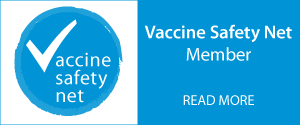Randomised controlled trials (RCTs) are considered the gold standard for assessing the efficacy of drugs prior to their approval for use in the general population allowing information on both efficacy and safety of the tested doses of drugs. RCTs in children are difficult and often unfeasible due to many different reasons.In children, physiologic characteristics (growth, organ development, hormonal status) are different from the adults and have an impact both on drug pharmacokinetics and pharmacodynamics that can vary in proportion to the body surface and/or body weight. These require separate evaluation of drug efficacy and safety including adverse side effects for the different paediatric age groups, e.g. neonates.In children for medical, scientific, practical and ethical issues, special attention should be paid to reducing the number and the burden of the experimental studies. Thus, to adapt RCTs or when randomised controlled trials are not possible, there should be appropriate methodologies and innovative designs in place that can evaluate the effects of drugs in children at the same level of evidence than in adults.To address these issues, the EU-funded GRiP project mobilised 22 institutions from Europe, North America and Japan, as well as the WHO. The key objective was to generate a Network of Excellence and provide the necessary infrastructure and knowledge for drug evaluation and development in the paediatric population.Safe, evidence-based drug developmentThe consortium addressed the lack of harmonisation in worldwide efforts by creating an integrated network for sharing expertise and creating standards and procedures supporting paediatric medicine development and evaluation. Six operational Work Packages were dedicated to specific issues covering paediatric data capturing and use (WP2), practical and evidence-based guidance to enhance the quality of paediatric trials (WP3), paediatric innovative study designs (WP4), paediatric formulation (WP5), neonates specific issues (WP6). All these activities contributed also to realise the main objective of the project: a large and internationally recognised educational programme including a Master of Science course in “paediatric medicine development and evaluation” to increase the number of well-trained paediatric clinical scientists (WP1). This International MSc course, the only one in the world, hosted by the University of Rome – Tor Vergata, has been running since 2014 acting as a pilot programme for the development of a Joint Degree MSc programme. Moreover, relevant informative and practical results were also acquired:
Tools to support innovative study design in paediatrics (including choice of comparator, definition of endpoints, biomarkers identification for paediatric use, example of new methods applicable in paediatric trials) neonatal specificities for drug development: protocols and strategies in neonatal diseases, inventory of neonatal centres involved in research, maternal issues, etc online platform for data sharing of epidemiological studies, observational studies, healthcare databases also facilitated the detection of safety signals of interest for children. A paediatric formulation webpage on the GRiP website, providing online and offline resources on excipients, and showing names and contact details of international formulation experts, divided by WHO region; the page also includes a “meet the expert” section, where users can access free webinars on formulations.
Towards improved paediatric clinical researchAs with many scientific fields, clinical research in paediatric drug development and testing is fragmented. To support interoperability, all the mentioned tools could be used globally to evaluate paediatric drug responses. Reports and guidance were provided to enhance the quality and impact of paediatric drug trials with a focus on collaboration.Additional approaches promoting modern research standards such as modelling and simulation tools, extrapolation, as well as input from patients and families were organised to facilitate high-quality clinical drug development in children. This allowed harmonisation in several activities, e.g. protocol implementation, data collection and analysis on a global scale.
Furthermore, innovative approaches would reduce the number of children enrolled in trials and the number of samples required for lab tests, supporting the use of bridging methodologies for regulatory procedures.The potential impact of GRiP will be to transform paediatric clinical research from a fragmented under-funded enterprise into a concerted activity by leveraging the resources, talent, knowledge and dedication of the partners. An important aspect of the project was also the collaboration of regulatory bodies, research groups and industry.Undoubtedly, the GRiP-generated standards will improve relevant research activities, thereby enabling collaboration between EU and non-EU regions to the extent that such integration will become standard practice.



